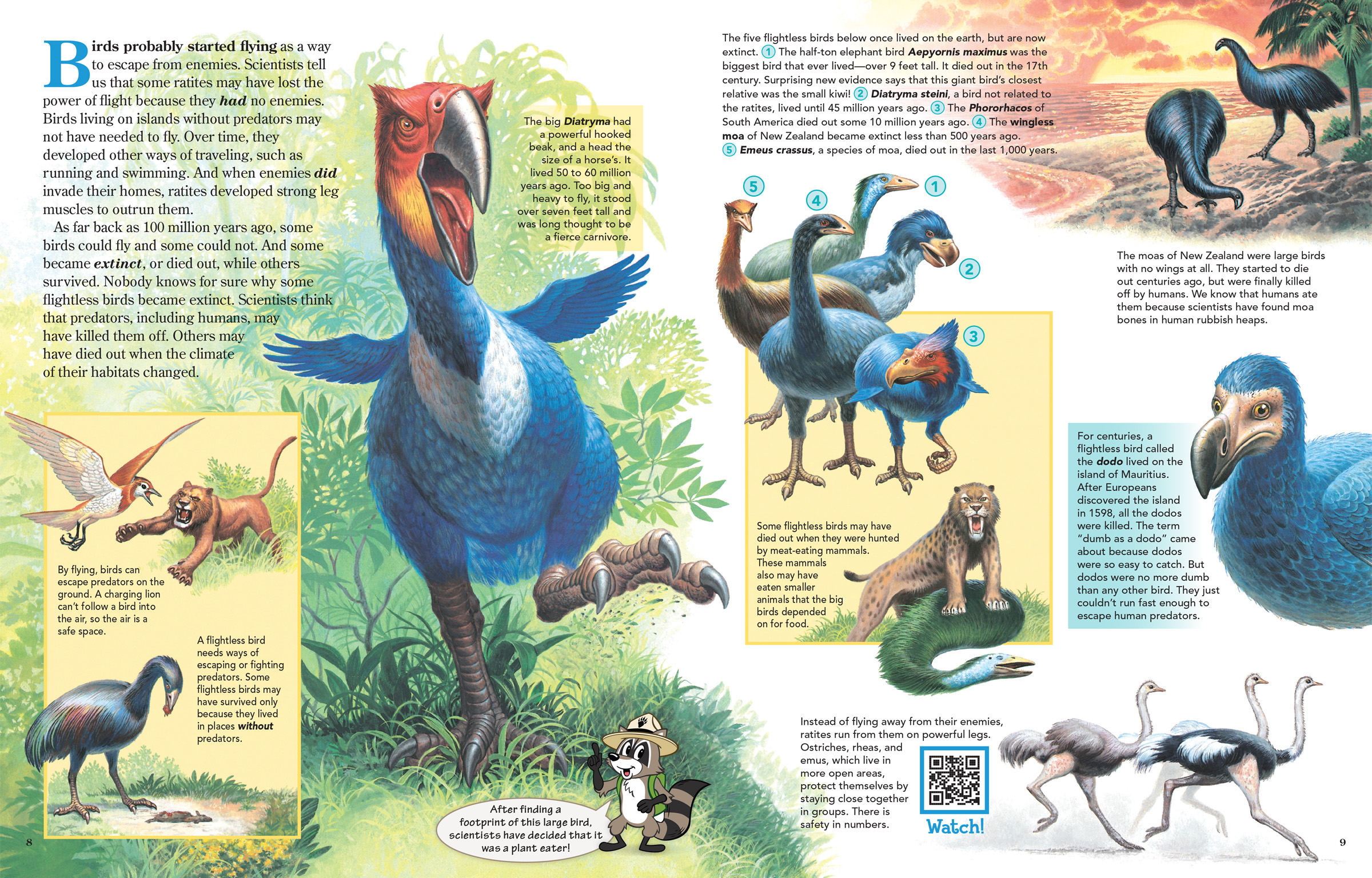
Why Did Some Birds Lose the Power of Flight?
ByBirds probably started flying as a way to escape from enemies. Scientists tell us that some ratites may have lost the power of flight because they had no enemies. Birds living on islands without predators may not have needed to fly. Over time, they developed other ways of traveling, such as running and swimming. And when enemies did invade their homes, ratites developed strong leg muscles to outrun them.
As far back as 100 million years ago, some birds could fly and some could not. And some became extinct, or died out, while others survived. Nobody knows for sure why some flightless birds became extinct. Scientists think that predators, including humans, may have killed them off. Others may have died out when the climate of their habitats changed.
 The big Diatryma had a powerful hooked beak, and a head the size of a horse’s. It lived 50 to 60 million years ago. Too big and heavy to fly, it stood over seven feet tall and was long thought to be a fierce carnivore.
The big Diatryma had a powerful hooked beak, and a head the size of a horse’s. It lived 50 to 60 million years ago. Too big and heavy to fly, it stood over seven feet tall and was long thought to be a fierce carnivore.
After finding a footprint of this large bird, scientists have decided that it was a plant eater!
By flying, birds can escape predators on the ground. A charging lion can’t follow a bird into the air, so the air is a safe space.
A flightless bird needs ways of escaping or fighting predators. Some flightless birds may have survived only because they lived in places without predators.
The five flightless birds below once lived on the earth, but are now extinct. 1 The half-ton elephant bird Aepyornis maximus was the biggest bird that ever lived—over 9 feet tall. It died out in the 17th century. Surprising new evidence says that this giant bird’s closest relative was the small kiwi! 2 Diatryma steini, a bird not related to the ratites, lived until 45 million years ago. 3 The Phororhacos of South America died out some 10 million years ago. 4 The wingless moa of New Zealand became extinct less than 500 years ago. 5 Emeus crassus, a species of moa, died out in the last 1,000 years.
The moas of New Zealand were large birds with no wings at all. They started to die out centuries ago, but were finally killed off by humans. We know that humans ate them because scientists have found moa bones in human rubbish heaps.
Some flightless birds may have died out when they were hunted by meat-eating mammals. These mammals also may have eaten smaller animals that the big birds depended on for food.
For centuries, a flightless bird called the dodo lived on the island of Mauritius. After Europeans discovered the island in 1598, all the dodos were killed. The term “dumb as a dodo” came about because dodos were so easy to catch. But dodos were no more dumb than any other bird. They just couldn’t run fast enough to escape human predators.
Instead of flying away from their enemies, ratites run from them on powerful legs. Ostriches, rheas, and emus, which live in more open areas, protect themselves by staying close together in groups. There is safety in numbers.

